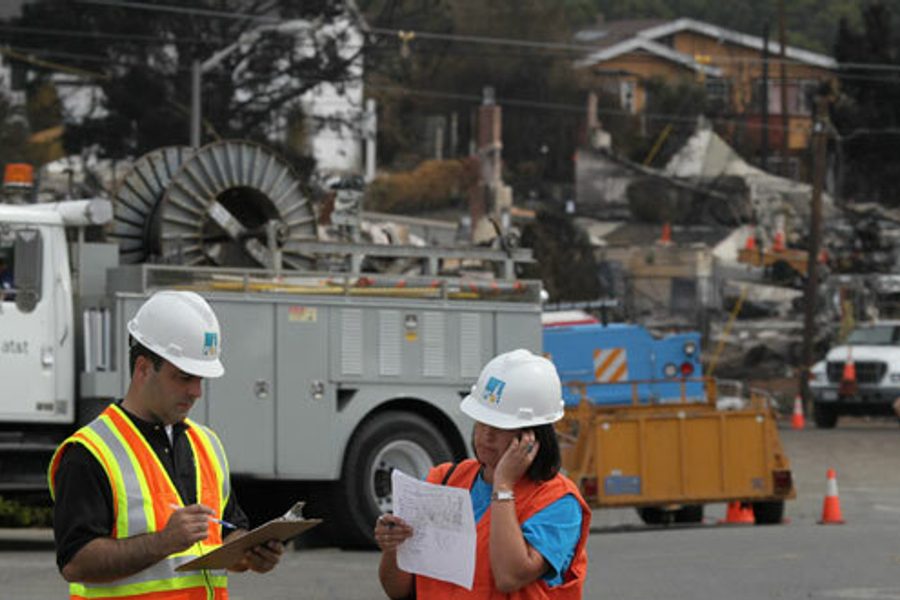
A gas pipeline exploded in San Bruno, Calif., on Thursday, killing at least seven people and destroying dozens of homes. Among the victims was 20-year-old Jessica Morales, an aspiring fashion designer who was watching football at her boyfriend’s house when the line blew and engulfed the neighborhood in flames. Jacqueline Greig, a 21-year veteran of the California Public Utilities Commission, also died in the blast alongside her 13-year-old daughter.
The Los Angeles Times reports that the pipeline was too old to accommodate the sophisticated testing device known as a pig or smart pig (actually a robotic snake that scoots along the length of the pipeline, analyzing the pipe for defects). The pig is the industry standard for newer lines. (More than 70% of the country’s gas and hazardous liquid pipelines were built before 1979, according to the Pipeline Safety Trust, a nonprofit watchdog group.)
Meanwhile, unionized engineers at PG&E are worried that their jobs will be outsourced if Republican Meg Whitman wins the upcoming gubernatorial election. In August, IFPTE-ESC Local 20 (an ALF-CIO-affiliated union of engineers and scientists) at PG&E launched a major workplace information campaign to inform other engineers about Whitman’s record on shipping jobs overseas. The pipeline tragedy underscores the importance of boots on the ground in California.
The pig is threaded through stretches of gas pipeline to test for leaks. However, the section of pipe that exploded was part of a a 51.5-mile stretch of PG&E (short for Pacific Gas and Electric Company) pipeline between San Francisco and Milpitas that was too convoluted for the pig. The company says that the pipeline was regularly inspected in other ways, however.
The exact cause of the blast has yet to be determined, but everyone seems to be assuming that it was the result of an undetected leak in the line. The National Transportation Safety Board (NTSB) has taken over the investigation. The NTSB is focusing on a 28-ft segment of pipe that was comprised of “several smaller segments that were welded together in an unusual configuration” with a seam running along the length of the pipe. Investigators pay special attention to welds and seams because these connection points can spring silent leaks while continuing to appear intact to the naked eye.
The Washington Independent reports that PG&E has had 19 “significant” pipeline accidents since 2002 which have cumulatively caused more than $4 million in damage. PG&E set up a $100 million fund to compensate victims of last week’s explosion.







